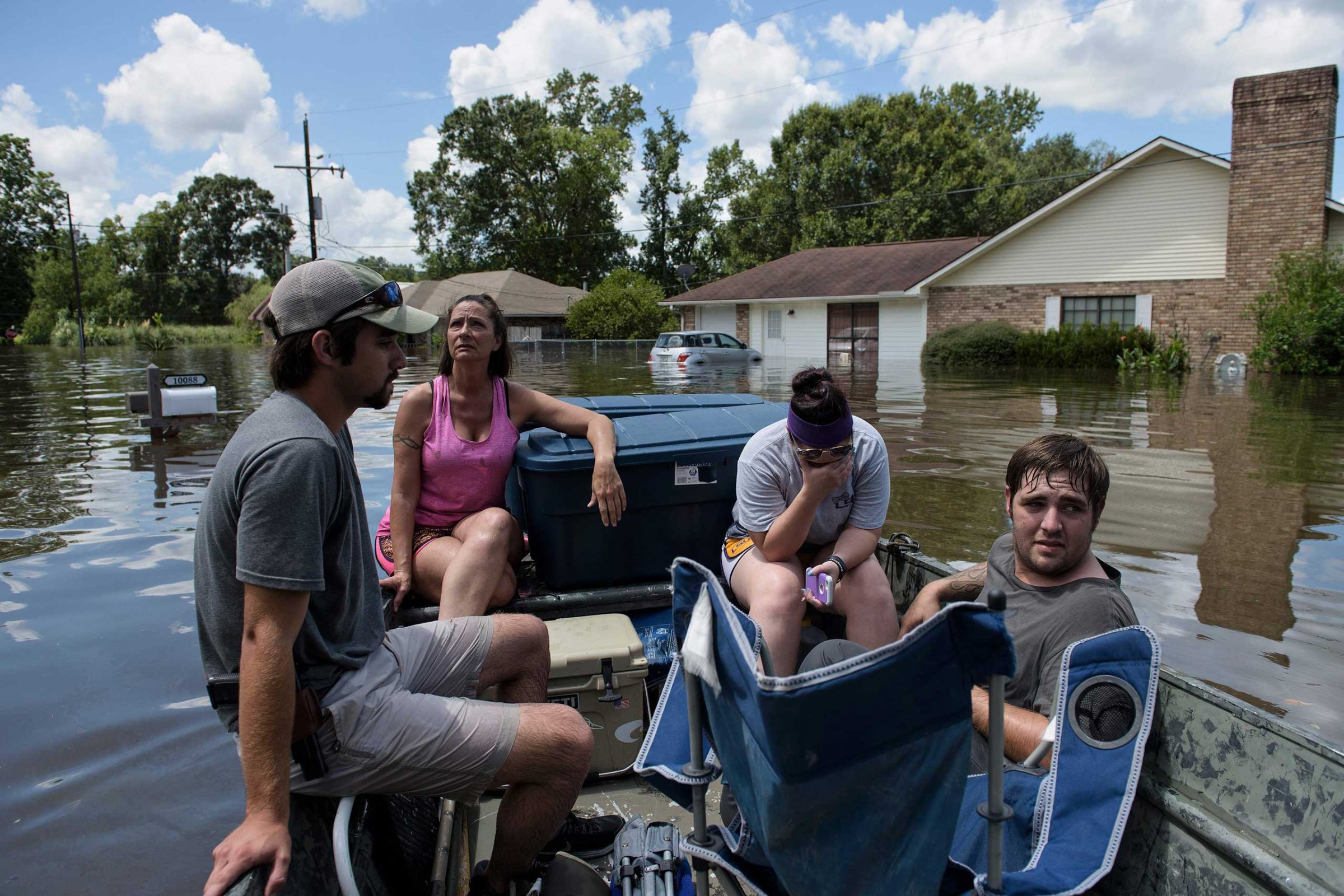
“Historic.” “Unprecedented.” The “worst” natural disaster to hit the U.S. since Superstorm Sandy slammed into the Eastern Seaboard nearly four years ago, according to the Red Cross. These are part of the chorus of descriptions about the floodwaters in the Baton Rouge area after some days of heavy rains.
Agence France-Presse photographer Brendan Smialowski had been following the coverage as he prepared to travel to the region earlier in the week. He tried not to go in with expectations—”if you go into something with an image in your head, you’re going to try to find what’s in your head versus what’s in front of you,” he says. He arrived on Monday evening, traveling light.
Everything was shut down. Some stores were flooded, others were just closed. Officials later said at least 13 people were killed and some 30,000 were rescued. President Obama declared 20 parishes for a major disaster.
“What I saw was just a very small sliver of what was happening,” he said. “Geographically this affected a huge area.”
He began driving east from the airport to areas he knew had been flooded. “The first chance that I felt I could tell the story, I hit the brakes as fast as I could,” he says. That turned out to be a church where the water had receded, and where locals were in the stages of gutting out the inside. “I saw pew piled on the side of the street,” he says. A pastor told Smialowski the church had opened its doors to flooding victims as a shelter but that later it became a helicopter landing zone, picking people up.
Inside the church, where elaborate murals covered the walls, a young boy rode in on a bicycle. He looked around a lot, spoke with the photographer for a moment, hesitated, then rode around and left. “I don’t know if he hesitated because it was a church or because of me, but it was surreal.”
Damage varied based on neighborhood and could to an extent be estimated by looking at the walls inside. “This one house I went into, the high-water mark was about five feet. They’re going to have to gut everything. Another house I went to, the house was clearly underwater. Another house, the high-water mark was above my head, so it might as well been underwater.”
Most of those he met were staying with relatives, others had made their way to shelters. Many were warm and welcoming to him. “Whether they’re in shock or overwhelmed, they tend to be just a little distracted” he says. “I actually find it to be a very easy time to work. You of course have to be sensitive and sympathetic, but it’s not difficult to approach someone at that point. I think they’re taking baby steps through what really is an overwhelming experience.”
Some people told him they felt like the news cycle—and it’s been a busy one, with the elections and the Olympics—came late. That was a sentiment picked up by media critics this week.
It wasn’t Smialowski’s first time covering floodwaters of this magnitude. In 2012, he was in Hoboken, N.J., when Sandy hit. And there were similarities—walking through the deluge meant encountering potential unseen dangers, even if these were different in both states: “I’m watching out for snakes in Louisiana and, in Jersey, I’m worried about manhole covers that came off.” Every step he took he was being cautious.
Smialowski said the flooding was “hard to wrap your head around.” Though he was there just a short time, he said locals he approached told him, “Well, I didn’t have a chance to clean up before you came.” It’s a joke he heard more than once there, even amid such devastation. “Of course, you have to laugh at that.”
Brendan Smialowski is an AFP photographer based in Washington, D.C. Follow him on Instagram @bsmialowski.
Andrew Katz, TIME’s International Multimedia Editor, edited this photo essay. Follow him on Twitter @katz.

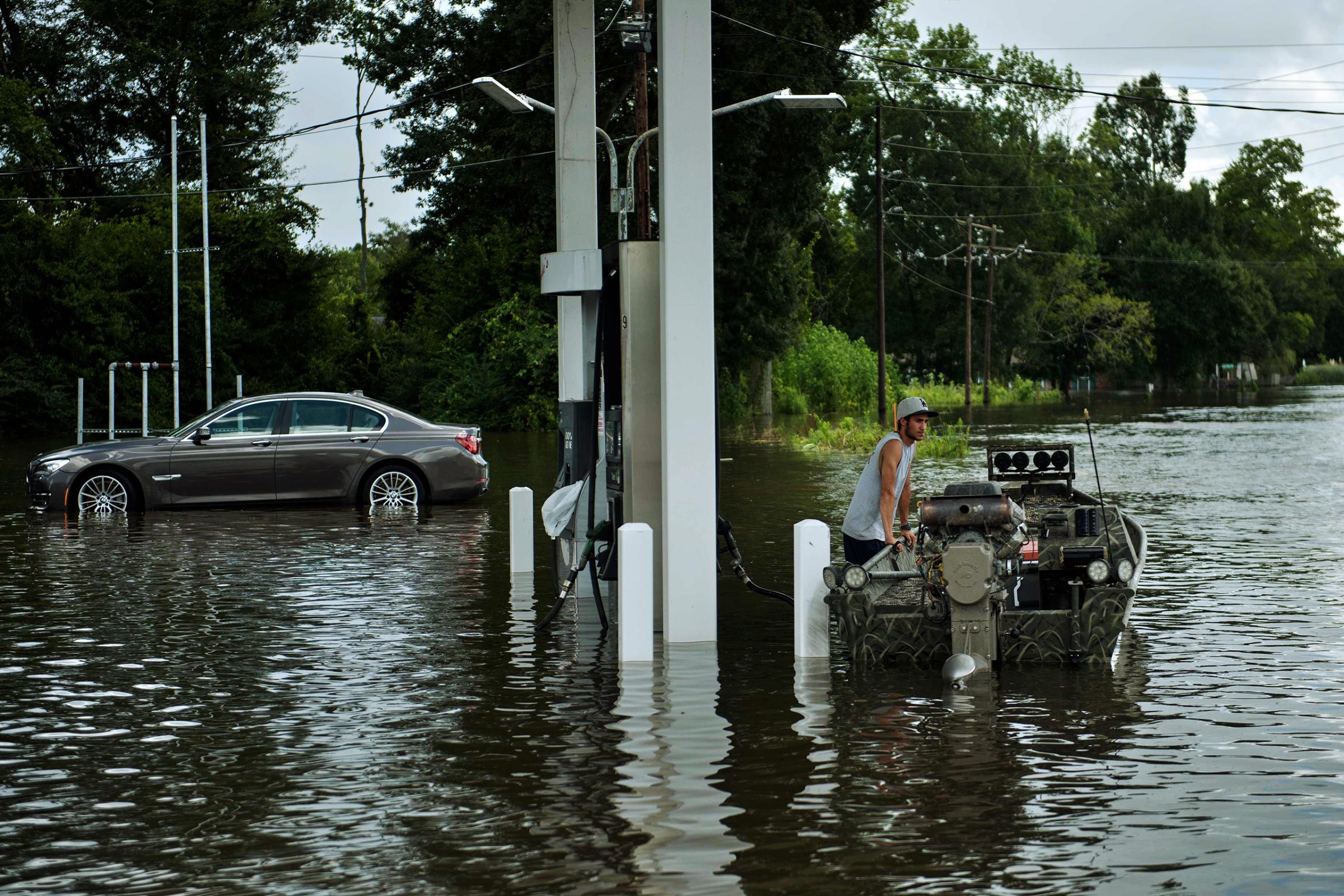

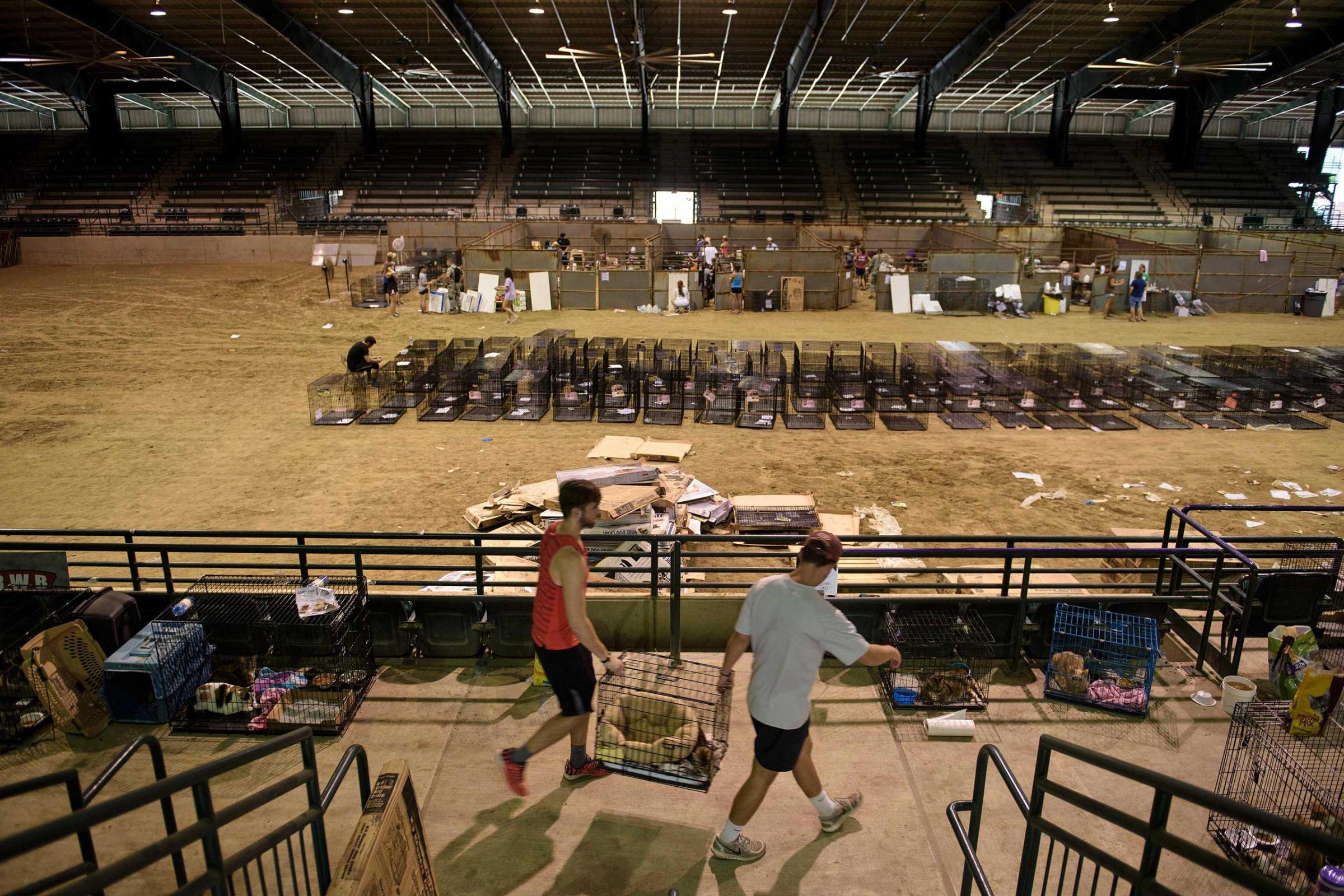
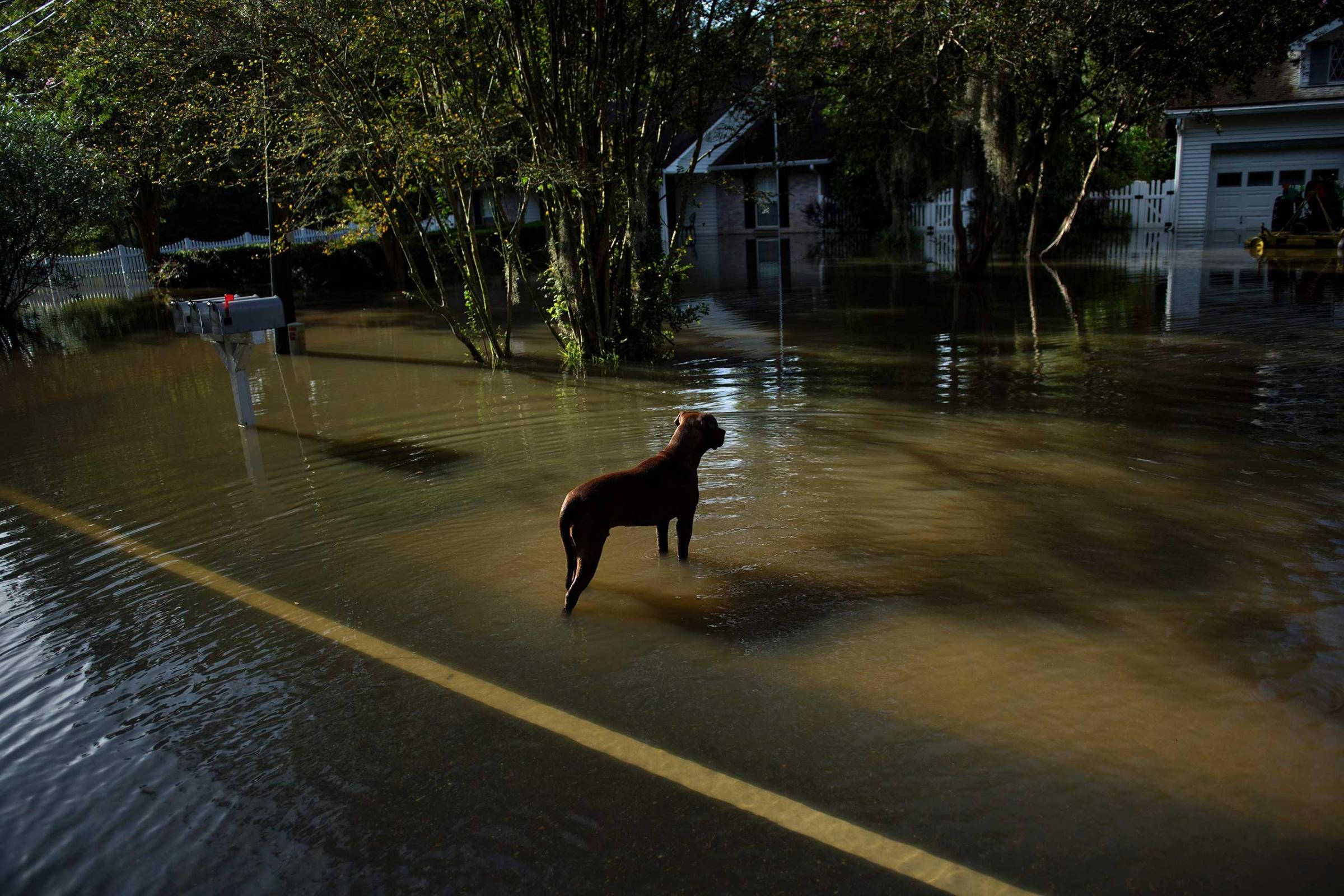

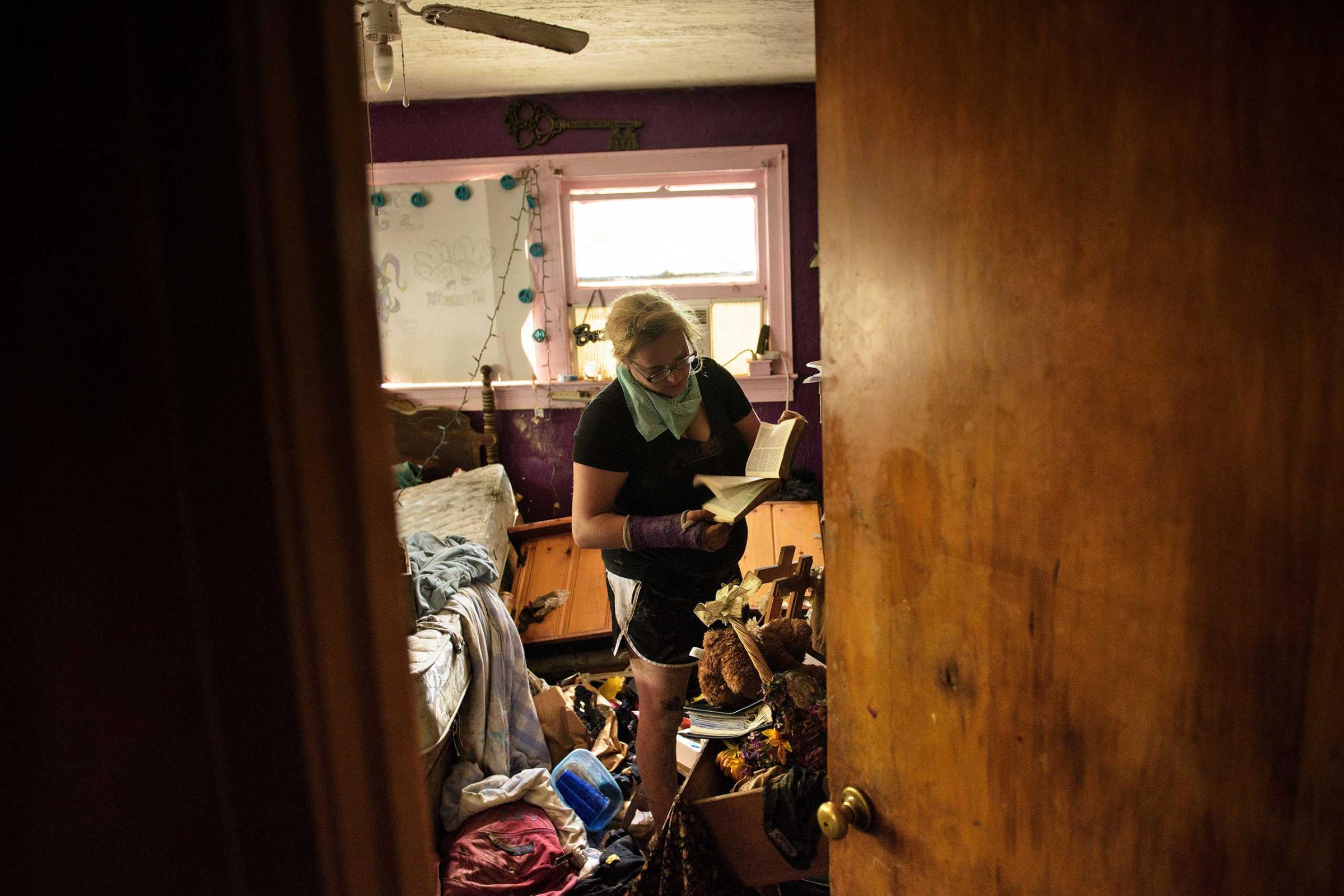
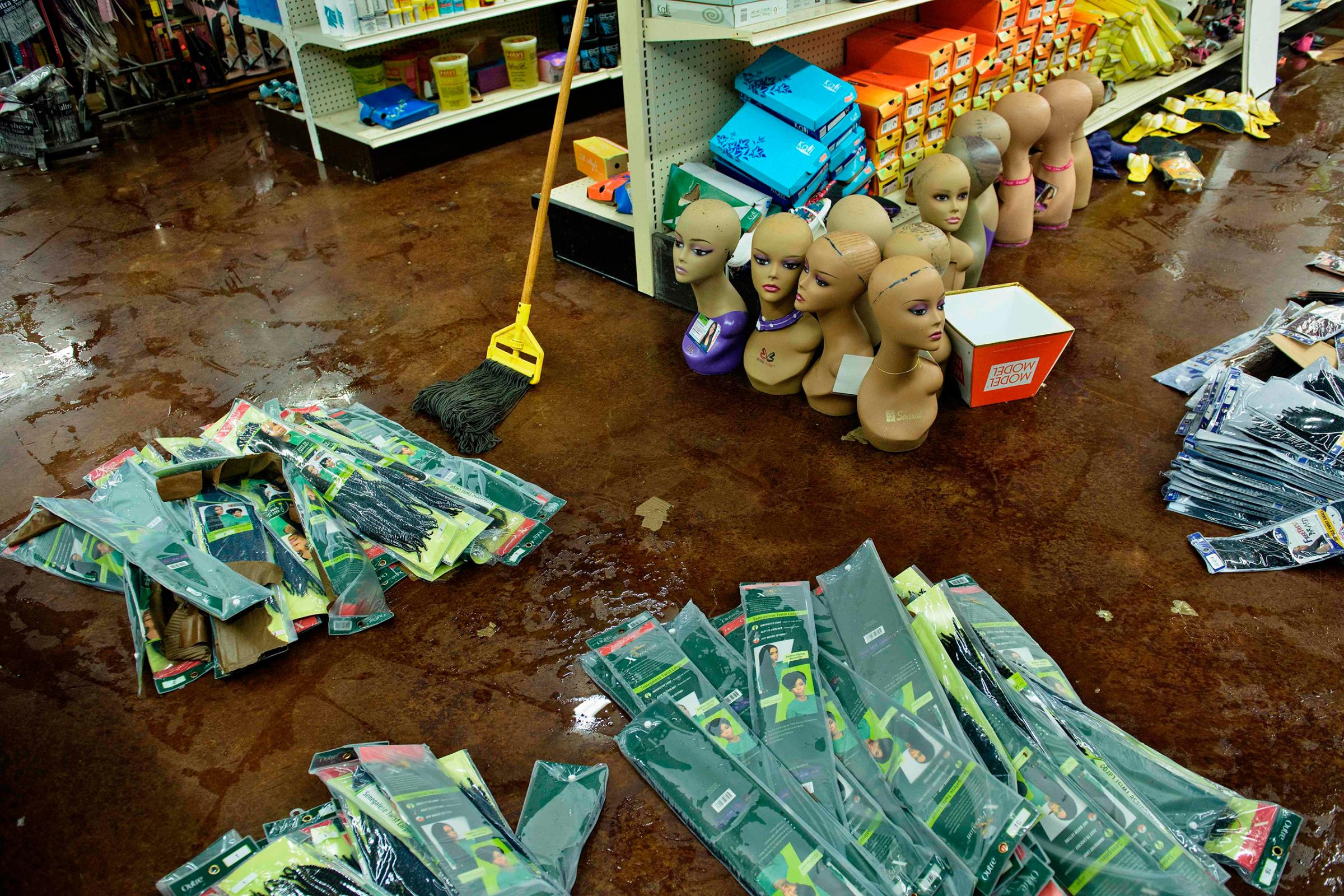
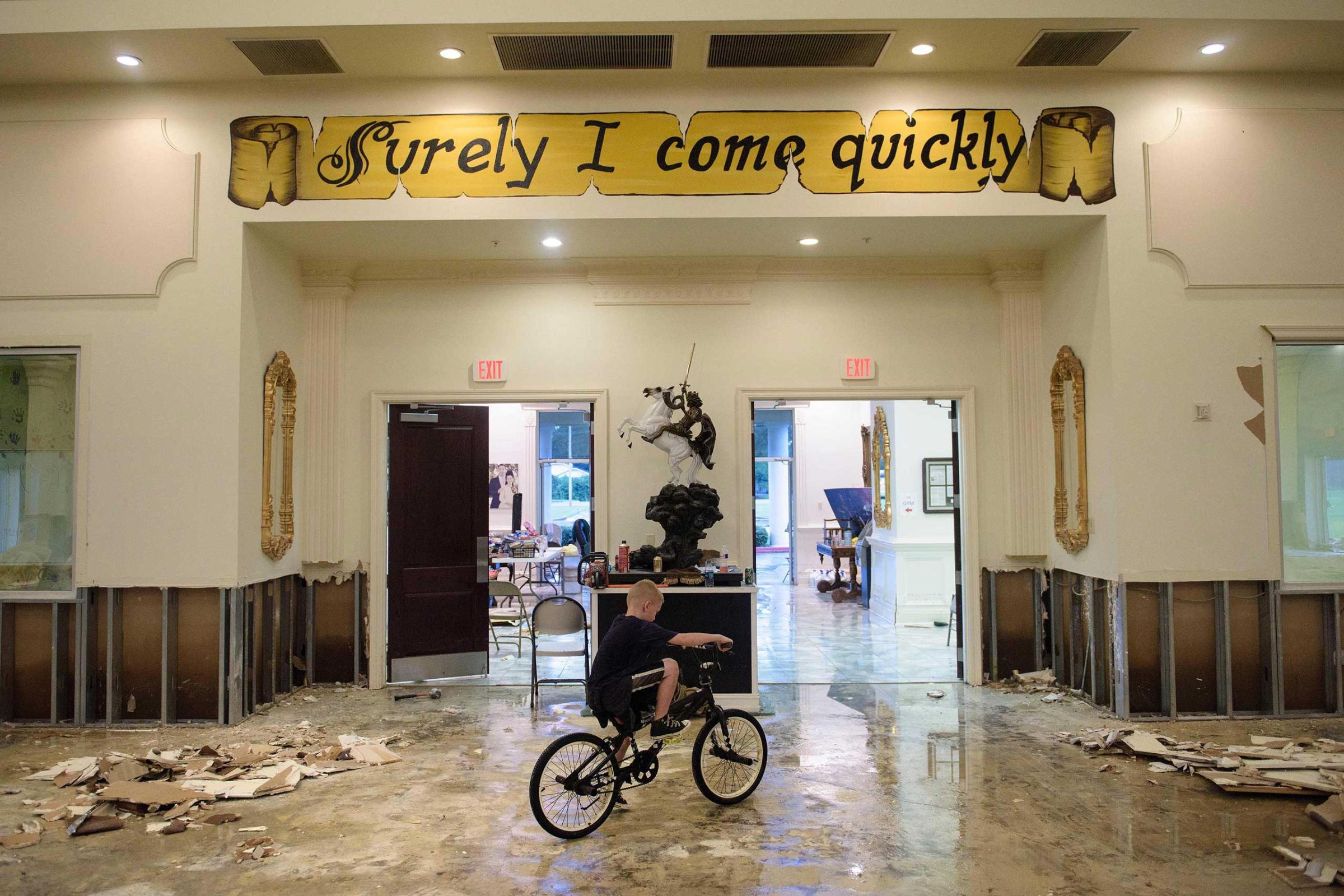
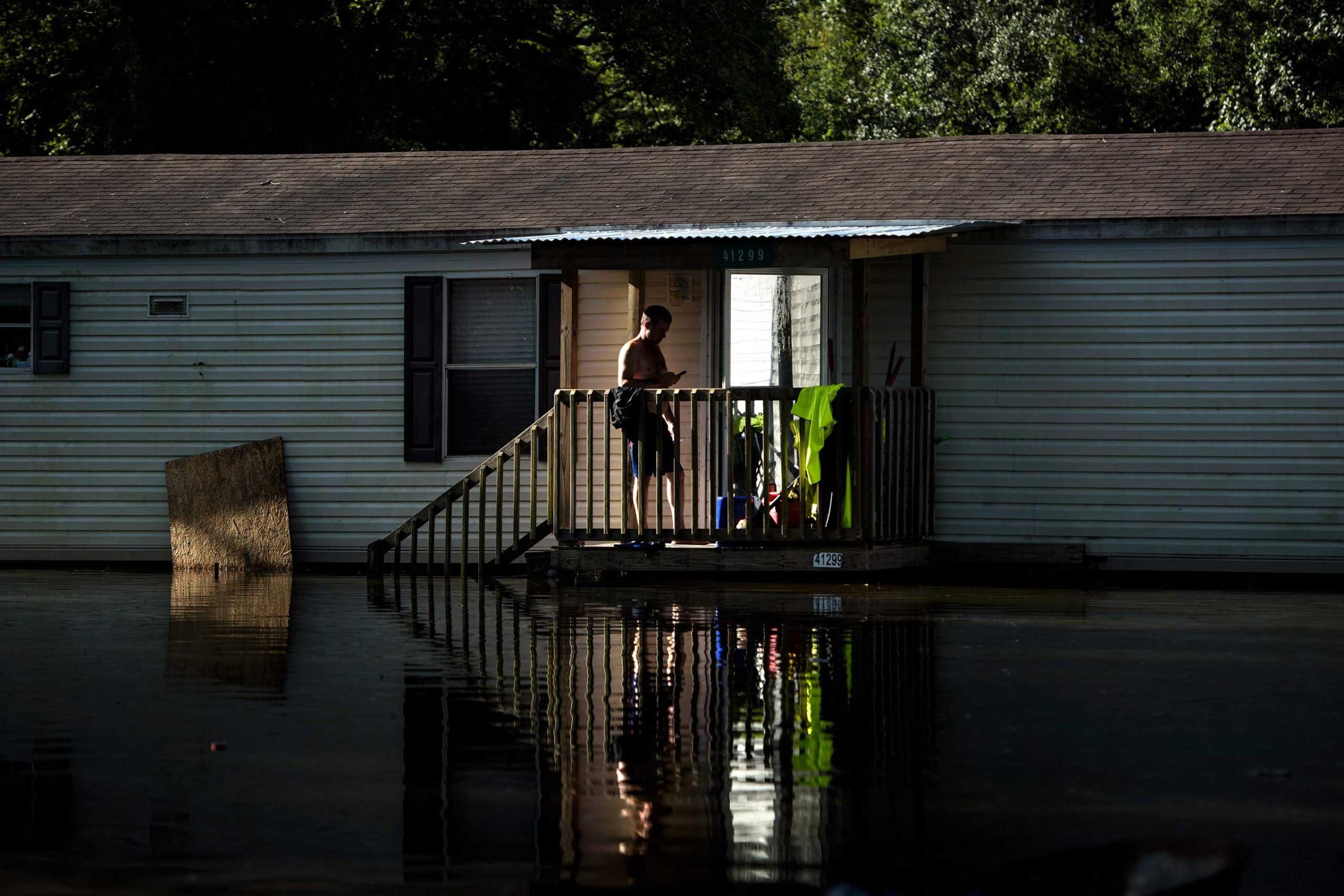
More Must-Reads from TIME
- Why Trump’s Message Worked on Latino Men
- What Trump’s Win Could Mean for Housing
- The 100 Must-Read Books of 2024
- Sleep Doctors Share the 1 Tip That’s Changed Their Lives
- Column: Let’s Bring Back Romance
- What It’s Like to Have Long COVID As a Kid
- FX’s Say Nothing Is the Must-Watch Political Thriller of 2024
- Merle Bombardieri Is Helping People Make the Baby Decision
Contact us at letters@time.com